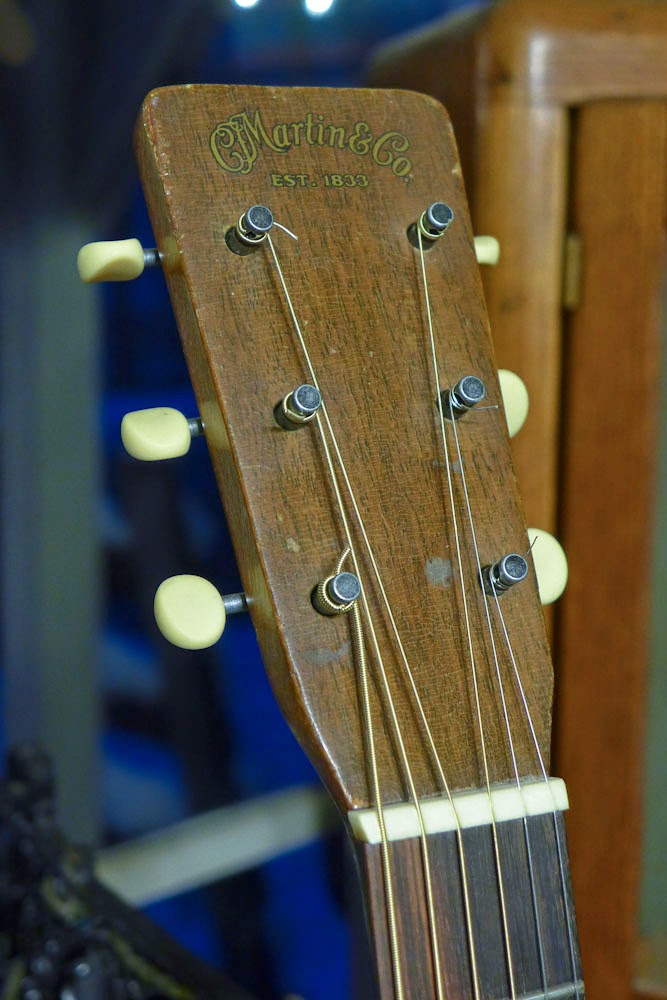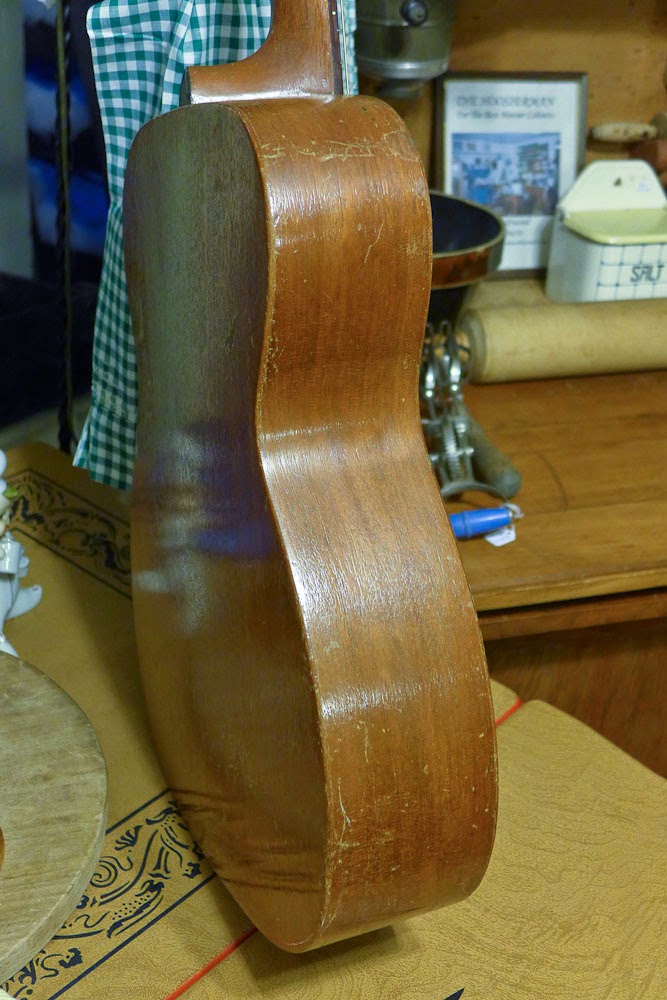1945 Martin 00-17 Flattop Guitar
All-mahogany Martins sure are a treat and the older the better, I say. This '45 has that good midrangey warm clarity that these are supposed to have and its worn-in charm makes it a prime choice in my book (no need to worry about scratching this one). It also sports a comfortable neck that's not-unlike more modern Martins and dishes out some good volume.
This is a customer's instrument and it came to me in decent shape but needing mostly setup work. The neck had already been reset in the past, the bridge is a replica/replacement that's a little oversize, and the board had definitely gotten a leveling and a refret. Unfortunately the refret job wasn't quite up to spec and various frets were out of alignment and too high here, too low there... so that all had to be addressed. I also replaced the pickguard with a repro Tortoloid-material one but more on that later.
This is a customer's instrument and it came to me in decent shape but needing mostly setup work. The neck had already been reset in the past, the bridge is a replica/replacement that's a little oversize, and the board had definitely gotten a leveling and a refret. Unfortunately the refret job wasn't quite up to spec and various frets were out of alignment and too high here, too low there... so that all had to be addressed. I also replaced the pickguard with a repro Tortoloid-material one but more on that later.
The finish (which was originally glossy and now looks like a worn-in semi-satin type) has certainly "lightened" and "yellowed" with age. Instead of getting that chocolate-brown color like some 15 and 17-series guitars from the time it's more of a creamy mocha color.
The headstock has a replacement nut that's cut decently. It, of course, needed adjusting after working on the frets. Note the lack of a headstock veneer.
The Brazilian rosewood board looks and feels great and the pearl dots cleaned up well, too. These are brand-new frets, apparently, but as I noted some height was removed here and there during the leveling and dressing process.
Just like any other non-adjustable-truss Martin with a long scale I've worked on, by the way, the neck gets a tiny bit of relief (~1/32" overall) when tuned up to pitch with a set of 12s on it. It seems like this just can't be helped with the long Martin scale (which = lots of tension) and doesn't effect playability: I've got it dialed-in to standard 3/32" bass and 1/16" treble at the 12th fret.
I had to add a repro-style "red swirl" Tortoloid pickguard as I actually cracked the original (very deteriorated, lightly curled, outgassed, and yellowed) pickguard. When I first pulled the guitar out and tuned it up to try it out I planted my pinky and put a big crack on the old guard. Oh well!
This is probably what it looked like when it was made as most of the Martins from this time tended to have these reddish-colored guards that brown up over time. I've rubbed it in a bit and tried to add a bit of distressing to fit it in.
The replica bridge was decently-made but the saddle was a bit crude. I recompensated it (it's bone) and it plays in tune, now. This came with some nice rosewood/pearl dot pins but I've added cream ones to match more of the vintage feel. The others are safely stowed in the case.
Despite all the hard wear, this guitar has no cracks.
The customer requested replacement vintage Kluson-style tuners to replace the 50s/early 60s more-common Kluson tuners that were on it. These are StewMac Golden Age units and work just like the originals.
Check out the cute little neck wood grafting!
















Comments